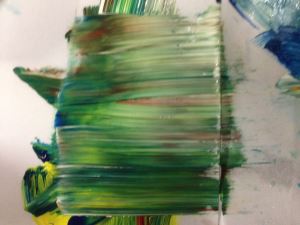
Simplifying colour with the Chevreul Colour Wheel
There are many ways to understand colour and colour mixing with oil and acrylic paint. The modified Chevreul Colour Wheel is the simplest and most powerful model available.
The Chevreul Colour Wheel is a pie chart showing Hue versus Chroma, and allowing easy identification of complementary colours.
Understanding this is the key to mixing any hue and controlling the tone and chroma (greyness).
In this session we will paint our own colour reference charts and learn how to control Hue, Tone and Chroma using the Chevreul System.
- Learn how to control Hue, Tone and Chroma using the Chevreul Method
- Paint a 3, 5 and 9 step tone scale without using black
- Paint a colour wheel
- Paint a reference chart for Green
- Paint a reference chart for Purple
- Paint a reference chart for Skin tones
What will we learn?
Tone Hue Chroma Chevreul Colour System Complementary Colours Grey Green Purple SkinPractical exercises
Tone
Tone Grey Complementary ColoursIn this exercise we will paint a 9 step tone scale with greys which we create by using complementary colours.
Tone is the foundation of visual storytelling,


Hue and Chroma
Hue Chevreul Colour System ChromaPaint a colour wheel using only our basic palette.
Notice that the chroma decreases as you approach the centre of the wheel.


Our basic palette contains:
- 3 primary colours
- 1 secondary: Orange which is complementary to Blue.
- One tertiary colour, Yellow Ochre, which allows us to mix nearly all the skin hues.

The finished colour wheel makes a visually appealing reference chart for your studio or classroom.

The finished colour wheel makes a visually appealing reference chart for your studio or classroom.
Greens
Use the Basic Palette to mix a range of greens from warm to cool, and high to low chroma.

Purple
Mix a palette of purples.
The family of purple is very important in painting as it is the complementary, and therefore shadow colour, to yellow.

The family of Purple contains Mauve, Lilac, Magenta and Violet.
Skin
Create a palette of skin colours based on Yellow Ochre.

In this lesson we paint a chart of the main skin tones based on Yellow Ochre.